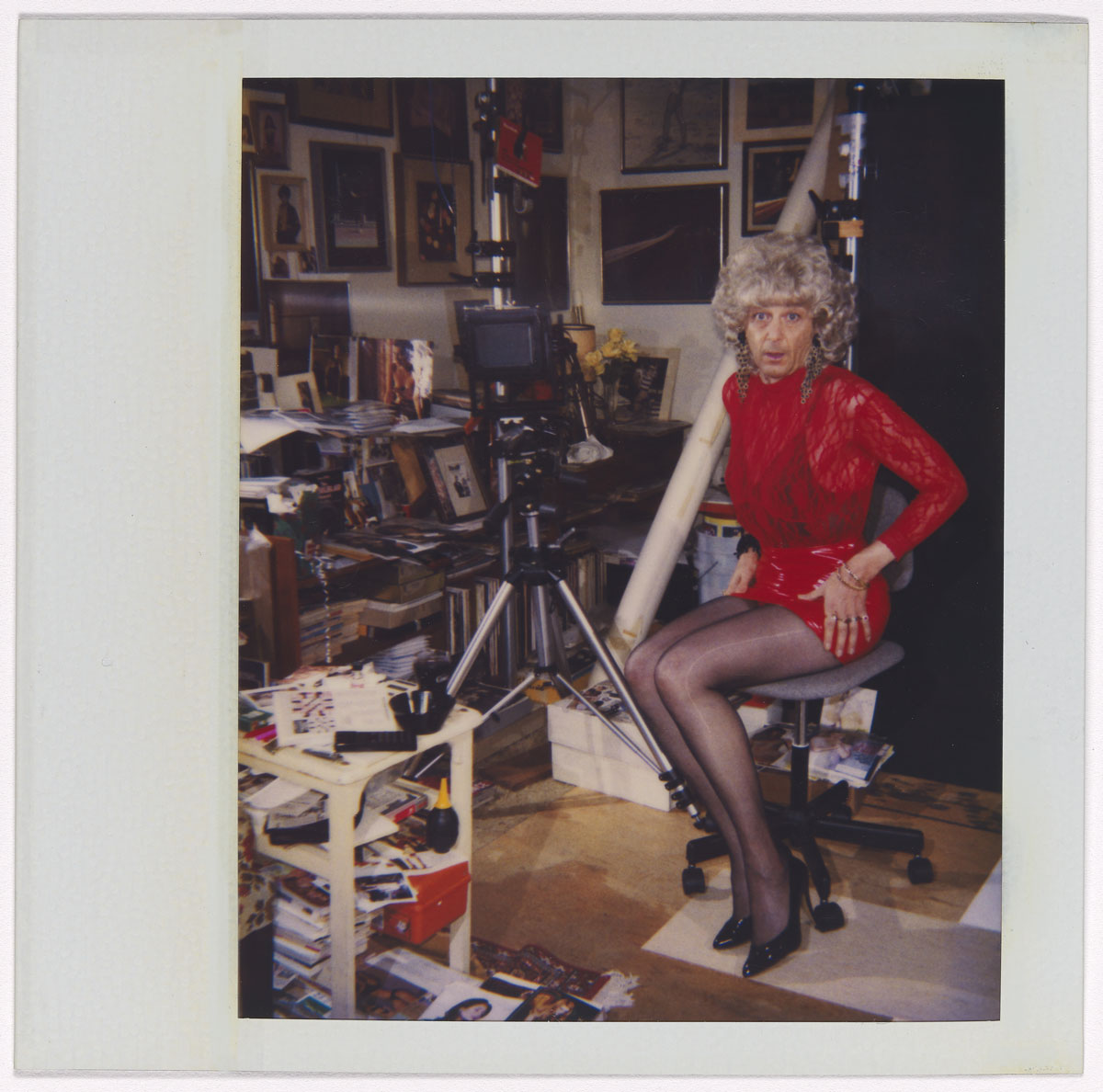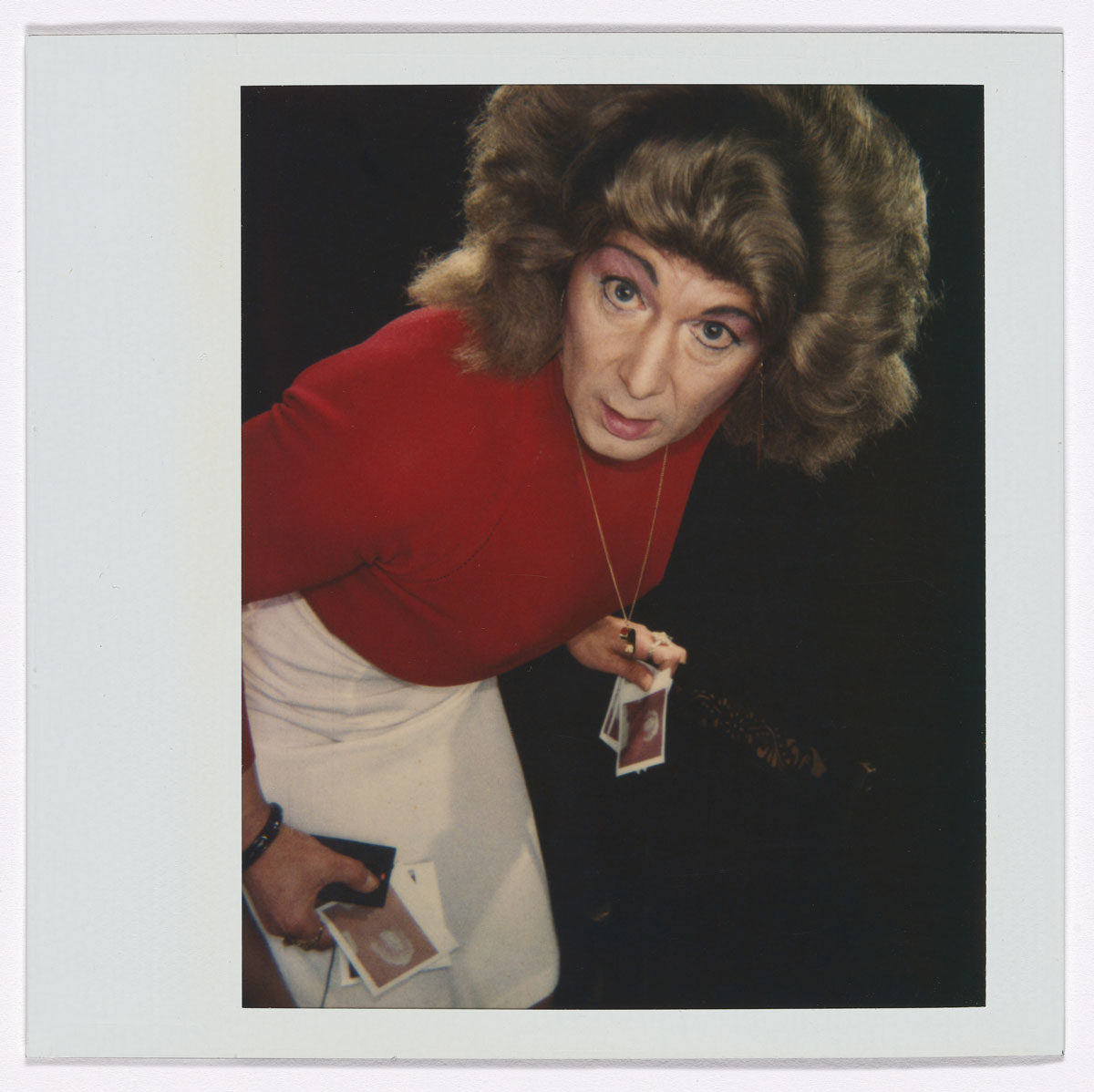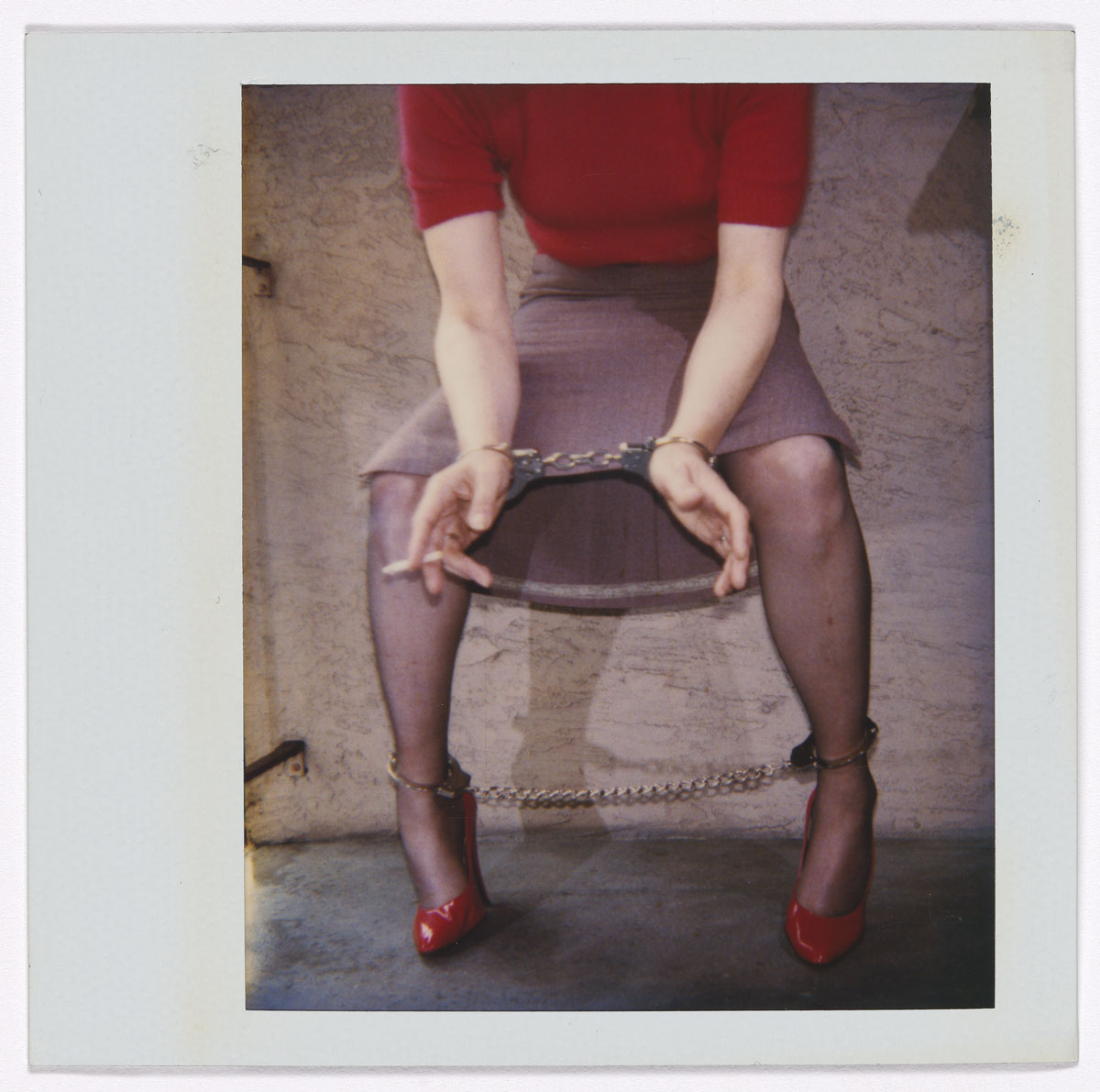In a one-room show on the San Francisco Museum of Art’s third floor, a “new to the collection” exhibition of framed Polaroids is actually new to just about everyone, a treasure trove of secret photographs that were almost lost to history.
April Dawn Alison, curated by Erin O’Toole, presents a constellation of images on dark painted walls, images discovered after the death of an Oakland commercial photographer known to friends, family and neighbors as Alan Schaefer. Indoors, seemingly alone, Schaefer became someone else: April Dawn Alison, a feminine alter ego who, over the course of 30 years, photographed herself in playful poses and bondage scenarios. As contemplative and exuberant. Dressed up and stripped down.

Naming—and gendering—the artist responsible for the works in April Dawn Alison requires careful consideration. O’Toole opts for “she,” writing “the Polaroids are of April Dawn, by April Dawn.” In the accompanying catalog from London publisher Mack, Hilton Als’ essay employs a more fluid use of both pronouns: “April was a maker and so was the guy who made April; these pictures are a record of a double consciousness, the he who wants to be a she and the she who is a model and photographer.” Zackary Drucker’s writing ties the work to a long lineage of trans artists and performers, using “she” throughout.
An equal amount of consideration went into the decision of whether or not to present these images publicly at all. Schaefer passed away at age 67 in 2008. O’Toole edited April Dawn Alison down from 9,200 Polaroids, a collection that remained remarkably intact while an estate liquidator sold off the rest of the artist’s belongings piecemeal. San Francisco painter Andrew Masullo purchased (or better put, rescued) the collection from the liquidator, gifting it to SFMOMA in 2017.
O’Toole writes about discussing issues of privacy and intent with the artist’s friends and family, concluding: “I have come to believe that the deep humanity, emotional impact, and visual sophistication of these photographs demands that they be shared.” It’s rare to see a curatorial statement dip into first person, let alone acknowledge any moral quandaries the organizer might have experienced in the process of putting together a show.

In the case of April Dawn Alison, this honesty and openness is fitting. Alison shot the intimate Polaroids in the tight quarters of a living space that appears increasingly filled with photography equipment, framed images, fashion ads and stacked storage boxes as time progresses. The images are incredibly vulnerable, even as she makes a silly face for the camera, widening her eyes in mock surprise or sticking out her tongue.
Alison is a shape-shifter. With a variety of wigs, makeup, jewelry and outfits, she tries out coquettish looks (French maid costume), demure business wear (high-necked white shirt under a dark blazer) and out-there getups (teal velour-looking leotard, pink skirt and three garters). Despite these variations in personae, the accumulated images seem to capture Alison—in her willingness to mug for the camera, splay her legs, hunch into a frame and every so often, smile a particularly zany smile.
Few knew about Alison. O’Toole writes that family members were aware Schaefer sometimes dressed in women’s clothes, and rumors circulated through the neighbors to that effect. But the true audience of Alison’s “encyclopedia of selves,” as Drucker calls the collection of Polaroids, was Alison herself.

In numerous shots included in the exhibition, a sequence of images shows Alison accumulating the Polaroids taken during a sitting, holding the photographs in her hands or lining them up on a shelf behind her. Sometimes, she trades eye contact with the camera for eye contact with herself—posing while peering at her own likeness in Polaroid form.
Certain things can be deduced about Alison from these images: she took great care crafting her appearance; she had a sense of humor; she was proud of her ability to construct images (both as a private practice and as a commercial photographer).
But there are so many more questions than answers. Did anyone know Alison as Alison? Was the only space where she could be this version of herself? Did someone help her get into some of the more complicated BDSM poses she staged? Was this photographic practice a secret she never intended to share—and should that affect how (and if) we look at these images now?

It’s especially difficult, in 2019, to refrain from assigning to Alison contemporary understandings of gender expression and fluidity. We will likely never have answers to the above questions; we can only acknowledge how these images make us feel now, and honor Alison’s contribution to visual culture by welcoming such expressions of self moving forward.
When I visited SFMOMA shortly after the exhibition’s opening, a group of young people were taking turns photographing each other in front of one of the walls, carefully arranging themselves in poses pulled (as many of Alison’s were) from the vocabulary of fashion ads and celebrity portraiture.
The space between Alison’s private world and this public display of glamorous, defiant identity collapsed, the former providing the space for the latter. And in that moment, Alison was simply a photographer ahead of her time, finally, posthumously, finding her adoring audience.

‘April Dawn Alison’ is on view at the San Francisco Museum of Modern Art through Dec. 1. Details here.